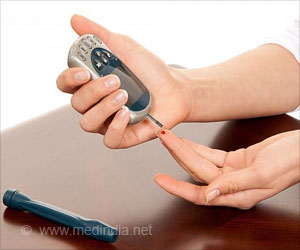Exercise repairs diabetes-related blood vessel damage and forms new blood vessels. This can be used as a precise tool in diabetes management in the future.

Many studies have underscored these benefits from exercise but how exercise prevents the diabetes-related complications from blood vessel damage remains unknown.
‘The overexpression of antioxidants induced by exercise promotes the formation of the new blood vessel by increasing hydrogen peroxide for normal cell function.’





Advertisement
How Does Diabetes Affect the Blood Vessels?
Angiogenesis is the ability to form new blood vessels, and diabetes, not only damages existing blood vessels but also hinders this innate ability to grow new ones in the face of disease and injury. Endothelial cells that line blood vessels are also essential to that new blood vessel growth.Now scientists have the first evidence that in a diabetic person, even one 45-minute session of moderate-intensity exercise delivers more of the protein, ATP7A directly to cells, which can set angiogenesis in motion.
“Not unlike the most sophisticated and efficient delivery services we have all come to rely upon, particularly during the pandemic, what exosomes carry depends on where they come from and where they are headed,” says Dr. Tohru Fukai.
Exosomes are nano-sized extracellular vesicles that contain constituents (protein, DNA, and RNA) of the cells that secrete them. While researchers are not yet certain of the origin of these helpful exosomes, it’s clear that one place they deliver is to endothelial cells.
Advertisement
Exercise Sparks the Growth of Blood Vessels
In both models of rats with type 2 diabetes and a handful of healthy 50-something-year-olds, running on a wheel for the mice and one cardio session for the humans increased levels of ATP7A in the exosomes that attached to endothelial cells.At that point, the activity did not affect the weight of the mice but increased the marker of endothelial function and factors like vascular endothelial growth factor, needed for angiogenesis.
Exercise also increased the amount of the powerful, natural antioxidant extracellular superoxide dismutase, or SOD3, but it’s the heavier payload of ATP7A, which is also known to deliver the essential mineral copper to cells, that is key to making good use of the SOD3 present.
SOD3 is an important natural antioxidant produced by vascular smooth muscle cells in the walls of blood vessels as well as skeletal muscle cells, which helps us maintain healthy levels of reactive oxygen species, or ROS.
ROS is a natural byproduct of our use of oxygen that is an important cell signal, enabling a variety of functions. But in diabetes, high blood sugar levels result in high ROS levels that instead hinder important normal functions.
Advertisement
Exercise Mimetic for Diabetes
Knowing that ATP7A levels are reduced in diabetes and exosomes in sedentary animal models of type 2 diabetes impair angiogenesis when placed in a dish with human endothelial cells, as well as in an animal model of wound healing.Scientists suggest that synthetic exosomes, already under study as drug-delivery mechanisms, could one day work as an “exercise mimetic” to improve patients’ ability to grow new blood vessels when diabetes has damaged their innate ability.
Even though physical exercise, like running or walking on a treadmill prompts muscles to contract which in turn prompts the release of exosomes into the blood, exercise mimetics can be used as a precise treatment delivery tool in diabetes.
Source-Medindia















